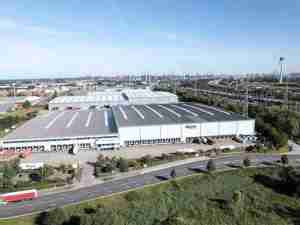“While the recession is over, the recovery remains weak,” said Joseph Magaddino, Ph.D., chair of the Department of Economics at California State University, Long Beach, and one of the seven panelists. The morning event brought about 500 attendees to the Hyatt Regency Hotel in downtown Long Beach.
The panelists agreed that lingering unemployment, tight credit and the depressed housing market make it unlikely trade will reach its pre-recession highs anytime soon, but early signs are positive. The Port of Long Beach, for example, experienced the third straight month of growth in February.
“History shows our industry always rebounds,” Port of Long Beach Executive Director Richard D. Steinke said during opening remarks. And “we are cautiously optimistic about an upward trend.”
The panelists echoed Steinke’s view.
“The ports really are the pulse of this country,” said panelist Fred Malesa, vice president of international intermodal for BNSF Railway, which transports cargo containers to and from West Coast ports and rest of the country. “I think we are headed in the right direction.”
Jeff Siewert, director of international logistics for retail giant Home Depot, said his company expects modest growth in 2010 after a large decline last year, and Peter Peyton, president of the International Longshore and Warehouse Union Local 63, said dock workers are already busier compared to the same period last year. Even “casuals,” the on-call workers who struggled to find any work during the recession, are slowly returning to the terminals, he said.
As trade rebounds, it is important to prepare for the longer term as well, the panelists said. The Port of Long Beach and the Port of Los Angeles, the country’s largest, are facing increasing competition from other West Coast ports for Asian cargo. And the planned expansion of the Panama Canal could divert cargo to East Coast ports. It is important for the ports to invest in infrastructure and have consistent regulations if they want to remain leaders, the panelists said.
The Port of Long Beach is investing nearly $3 billion in capital improvements over the next decade and its comprehensive environmental policy ensures that the growth will be sustainable. The Port’s HYPERLINK "http://www.up0.net/c.html?rtr=on&s=eauz,edap,12r8,ev10,fbod,3bk0,iyvz"Clean Trucks Program, for example, has reduced truck-related pollution by 80 percent in two years and the redevelopment of Middle Harbor will double capacity of two existing terminals while cutting air pollution in half.
Other panelists included Wolfgang Freese, president of Hapag-Lloyd America, Frank Capo, vice president of customer service and sales for Total Terminals International, and Matt Schrap, director of environmental affairs for the California Trucking Association.









